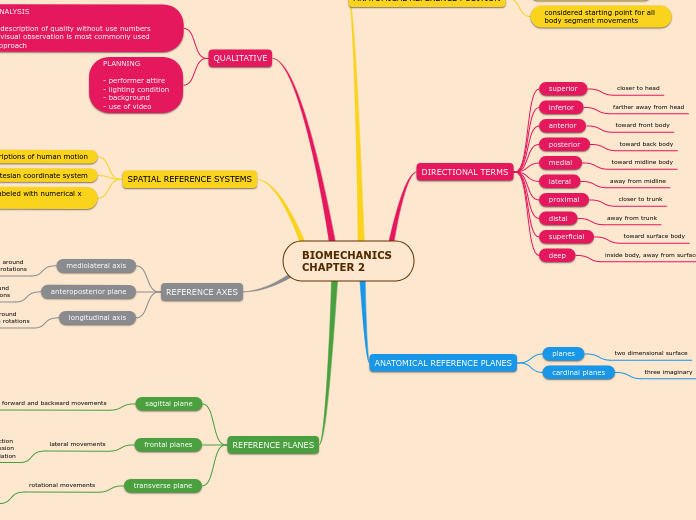BIOMECHANICS
CHAPTER 2
ANATOMICAL REFERENCE POSITION
erect standing position
all body parts facing forward
considered starting point for all
body segment movements
DIRECTIONAL TERMS
superior
closer to head
inferior
farther away from head
anterior
toward front body
posterior
toward back body
medial
toward midline body
lateral
away from midline
proximal
closer to trunk
distal
away from trunk
superficial
toward surface body
deep
inside body, away from surface
ANATOMICAL REFERENCE PLANES
planes
two dimensional surface
cardinal planes
three imaginary
QUALITATIVE
ANALYSIS
- description of quality without use numbers
- visual observation is most commonly used approach
PLANNING
- performer attire
- lighting condition
- background
- use of video
SPATIAL REFERENCE SYSTEMS
standardizing descriptions of human motion
commonly used is Cartesian coordinate system
human joint centers are labeled with numerical x and y
REFERENCE AXES
mediolateral axis
imaginary line around
sagittal plane rotations
anteroposterior plane
imaginary line around
frontal plane rotations
longitudinal axis
imaginary line around
transverse plane rotations
REFERENCE PLANES
sagittal plane
forward and backward movements
movements occur
- flexion
- extension
- hyperextension
frontal planes
lateral movements
movements occur
- abduction, adduction
- elevation, depression
- radial, ulnar deviation
transverse plane
rotational movements
movements occur
- horizontal abduction, adduction
- supination, pronation
- medial, lateral pronation
